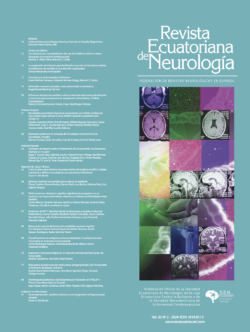Introduction: Temporal lobe epilepsy (TLE) of is the most frequent form of adult epilepsy, temporal mesial sclerosis (TMS) is a common abnormality associated. It could appear at the end of second decades in life.
Case report: We report a male patient, 67 years old, who suffered moderated Covid 19. Six months, he started with seizures which characterized by gastric disturbances, hand and oral automatisms, teeth snapping, upper extremities rigidity and change of hands coloration. EEG showed interictal paroxystic activity over left frontal and central-temporal regions and also abnormalities in quantitative measures. MRI described frontal, parietal, occipital and temporal mesial atrophy with hyperintensity on mesial and hippocampal areas. The volumetric value was diminished on middle frontal and temporal gyrus, pre-central gyrus, parietal lobe, insular cortex and operculum, the value of cortical thickness was diminished on pre-central gyrus.
Conclusions: This is a case with unusual beginning of TLE due to TME post-Covid.





